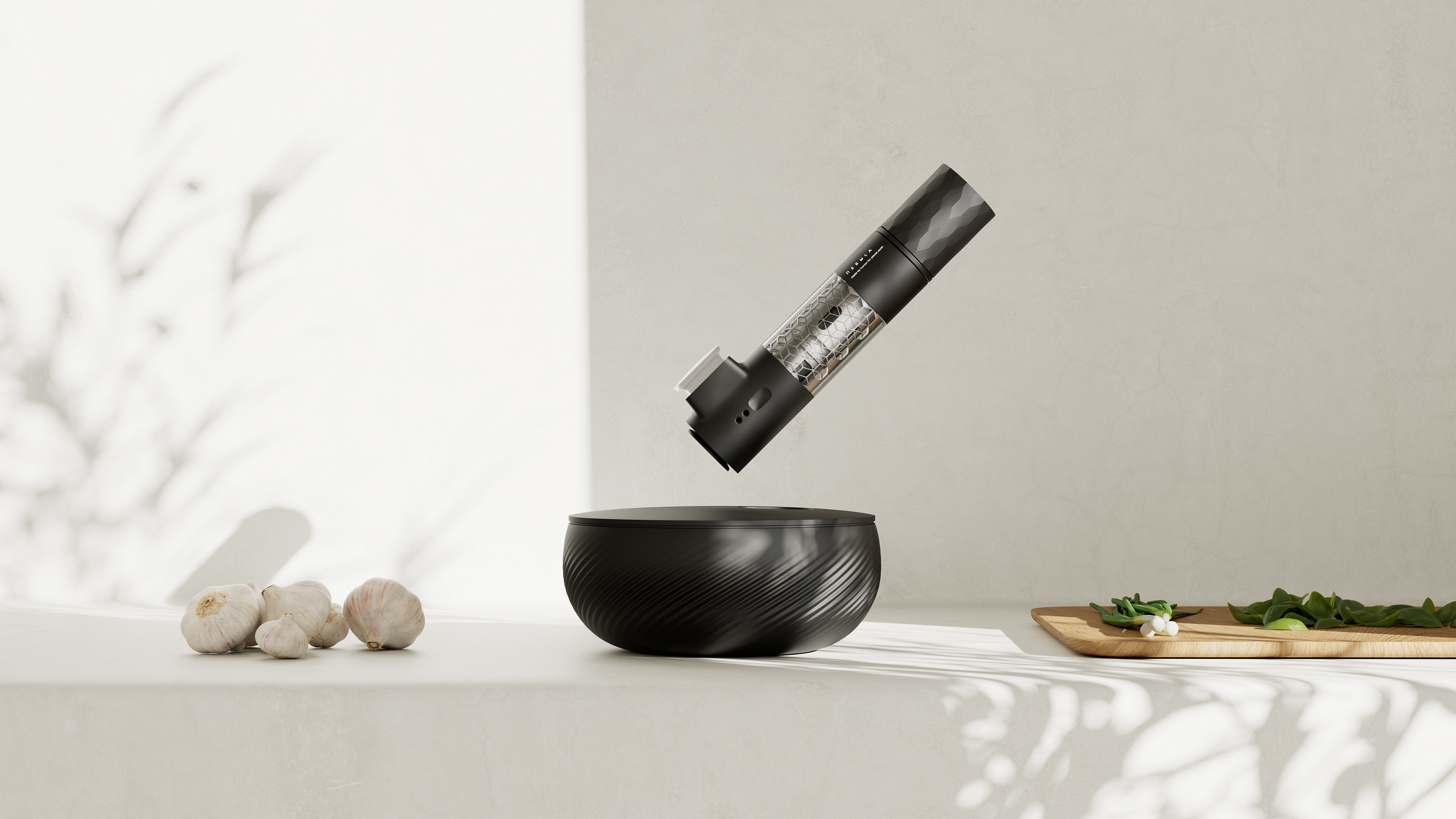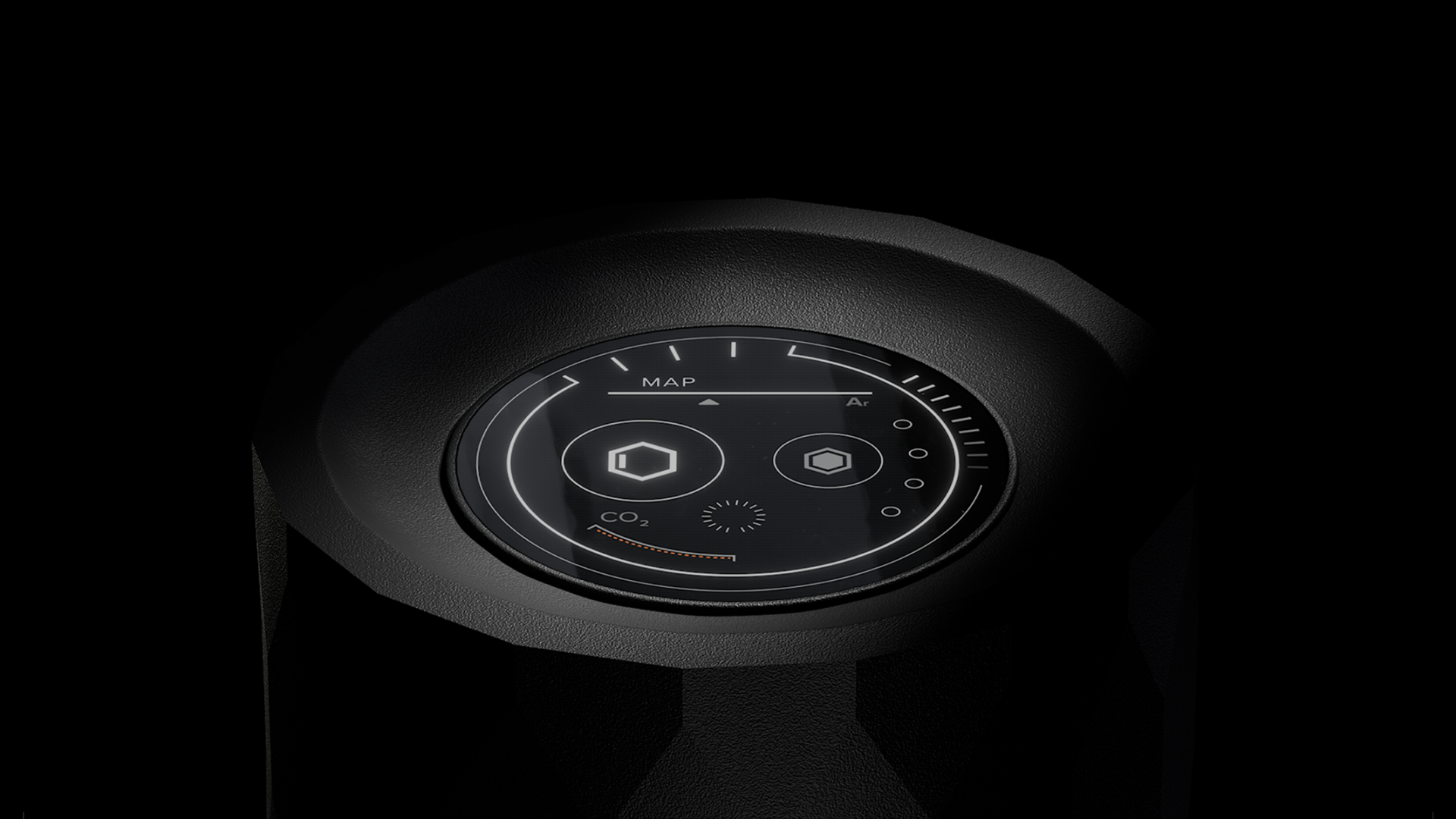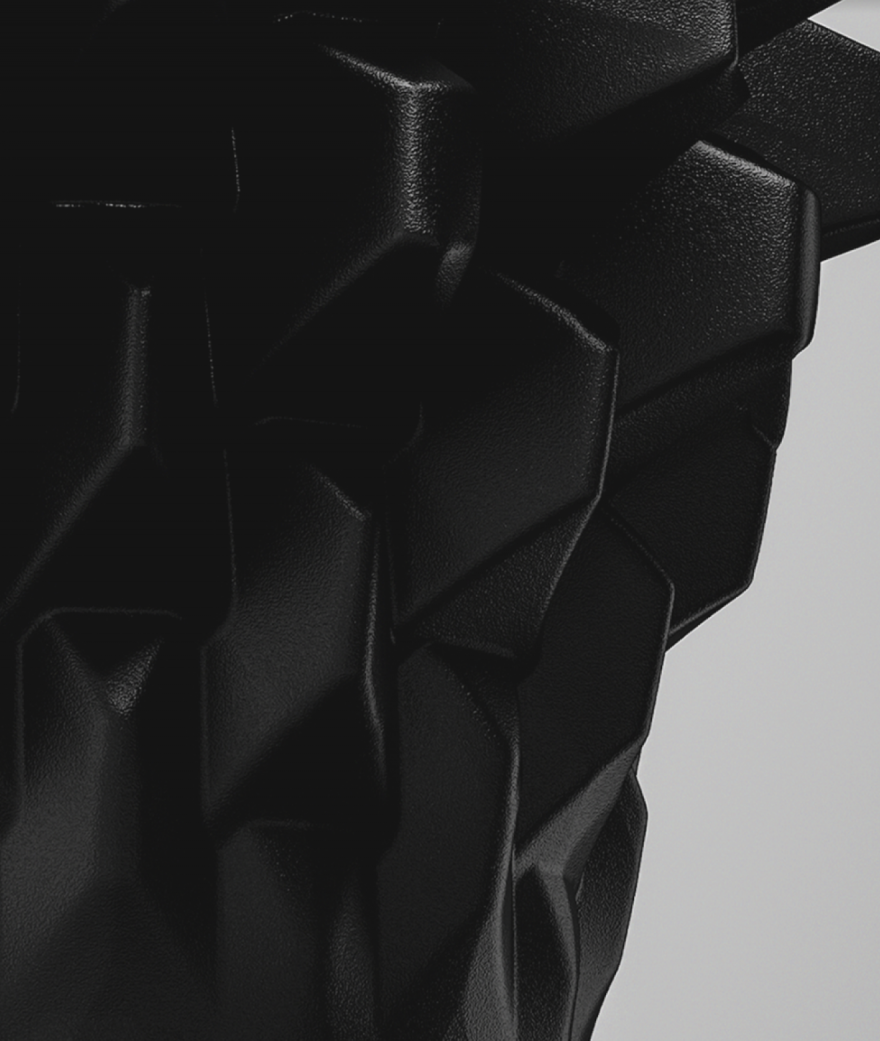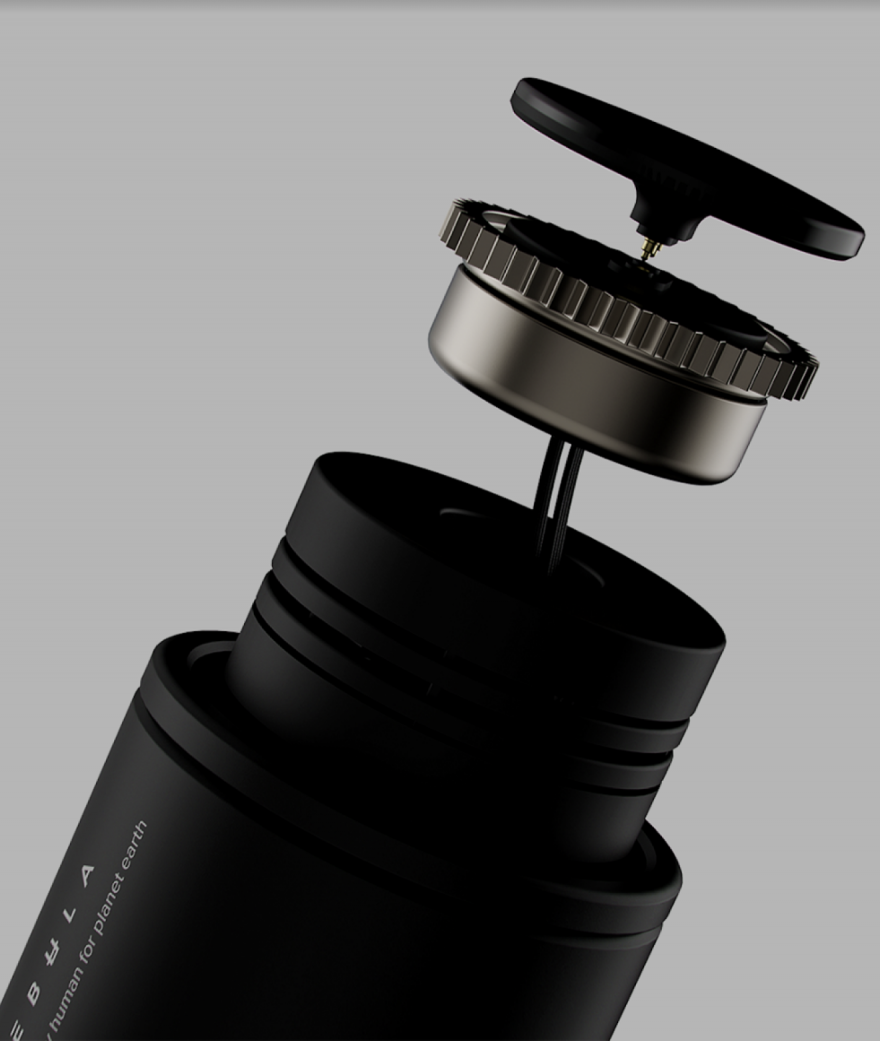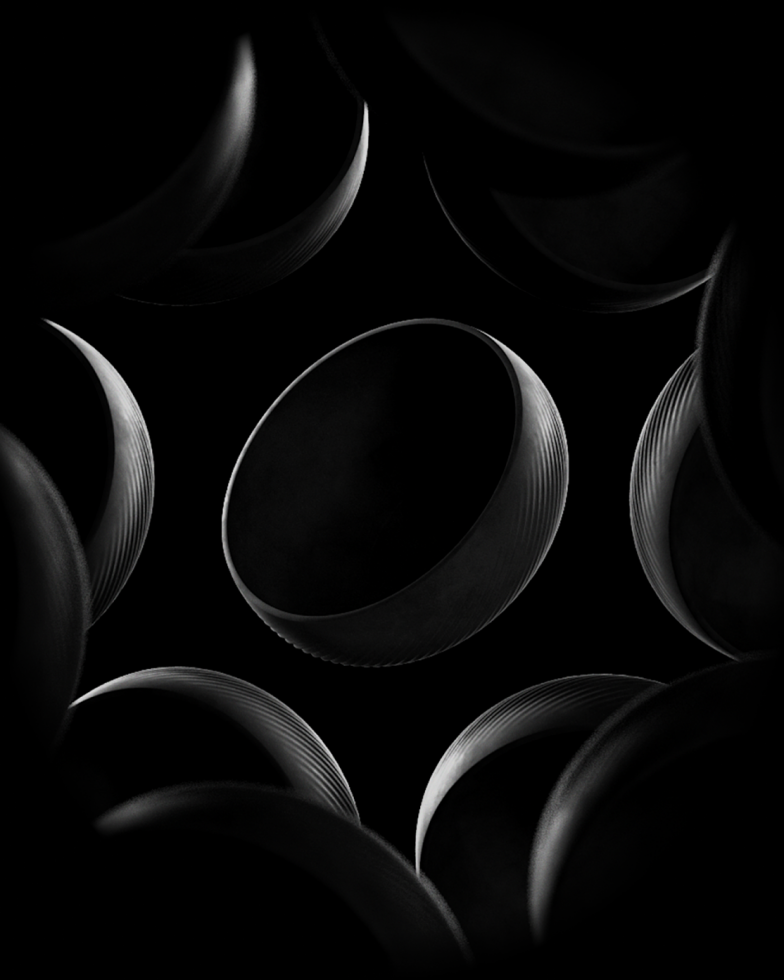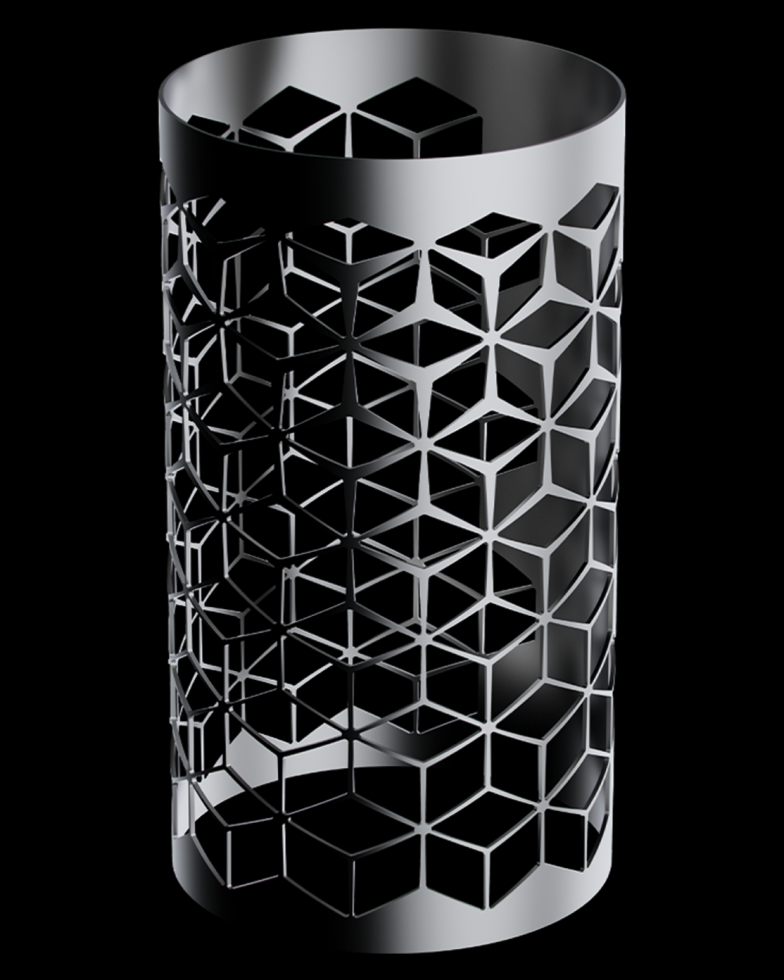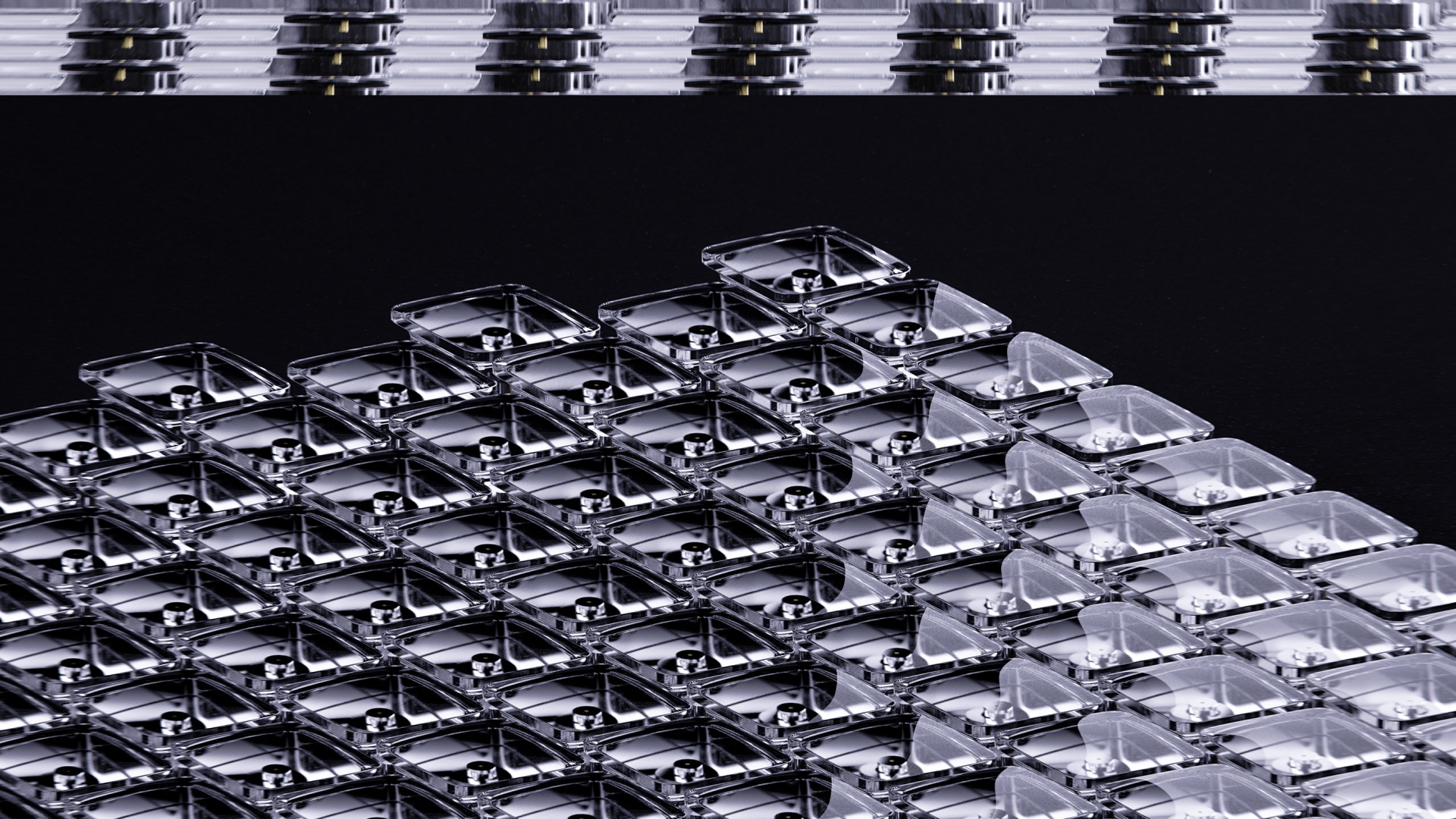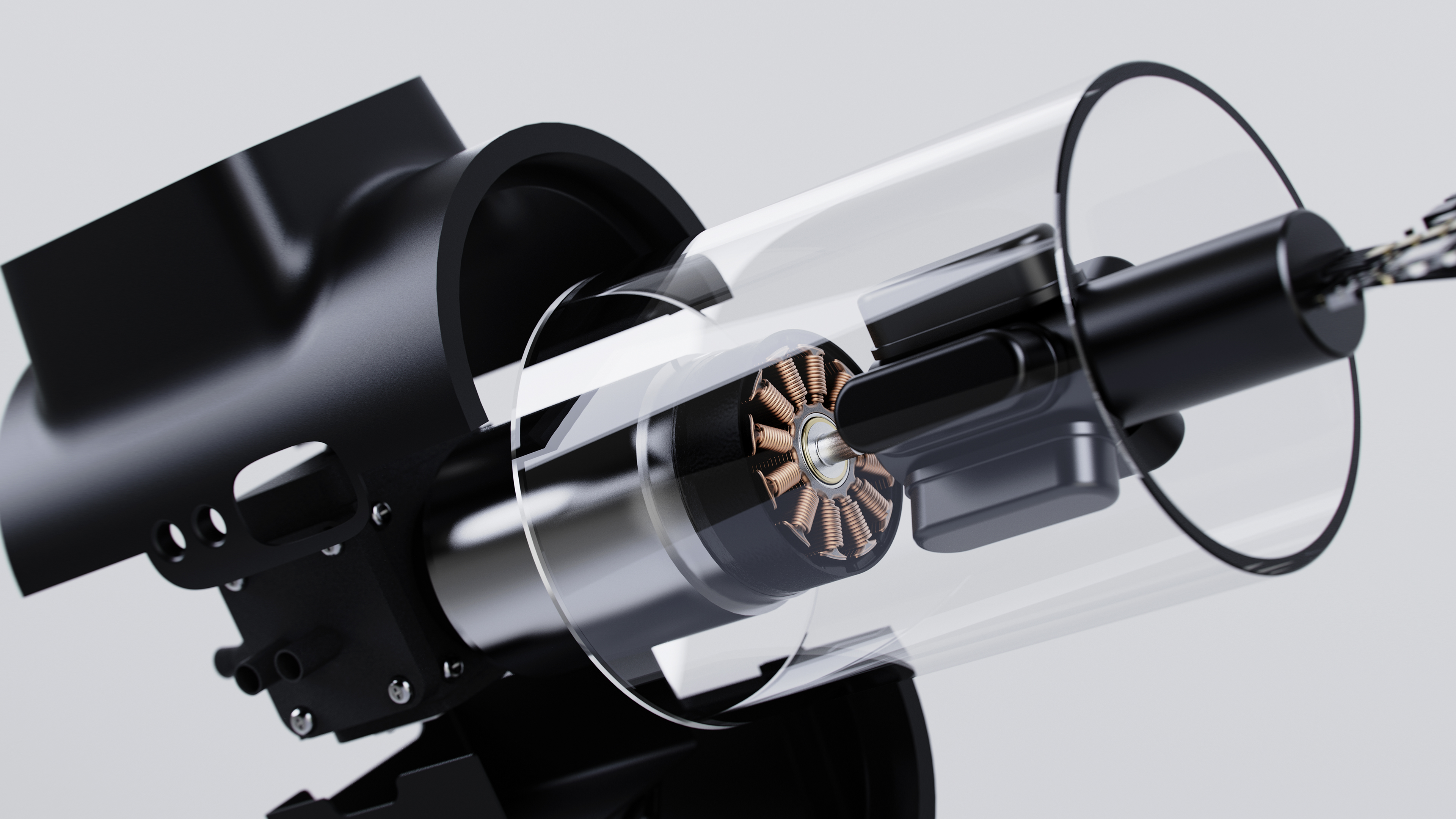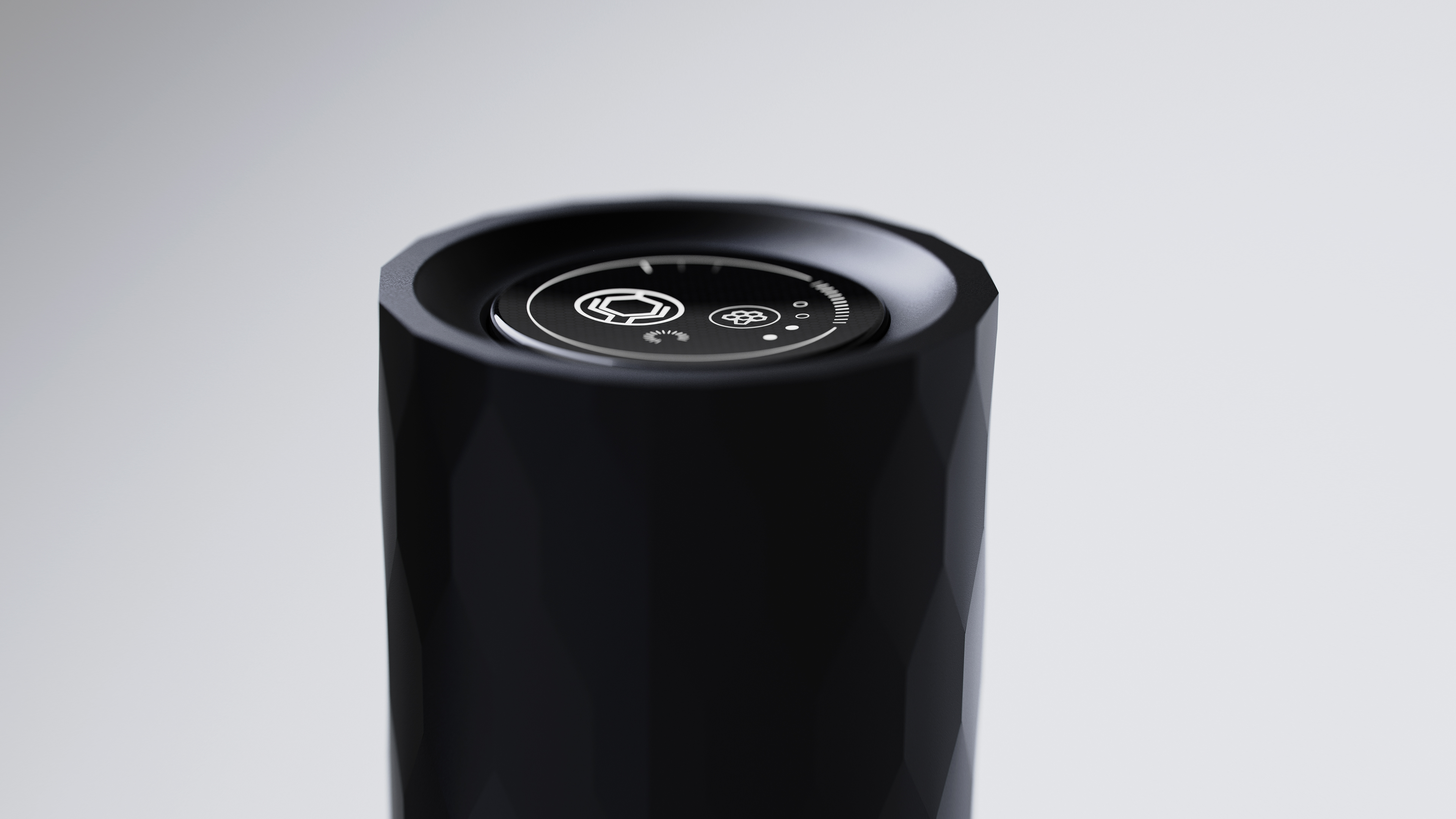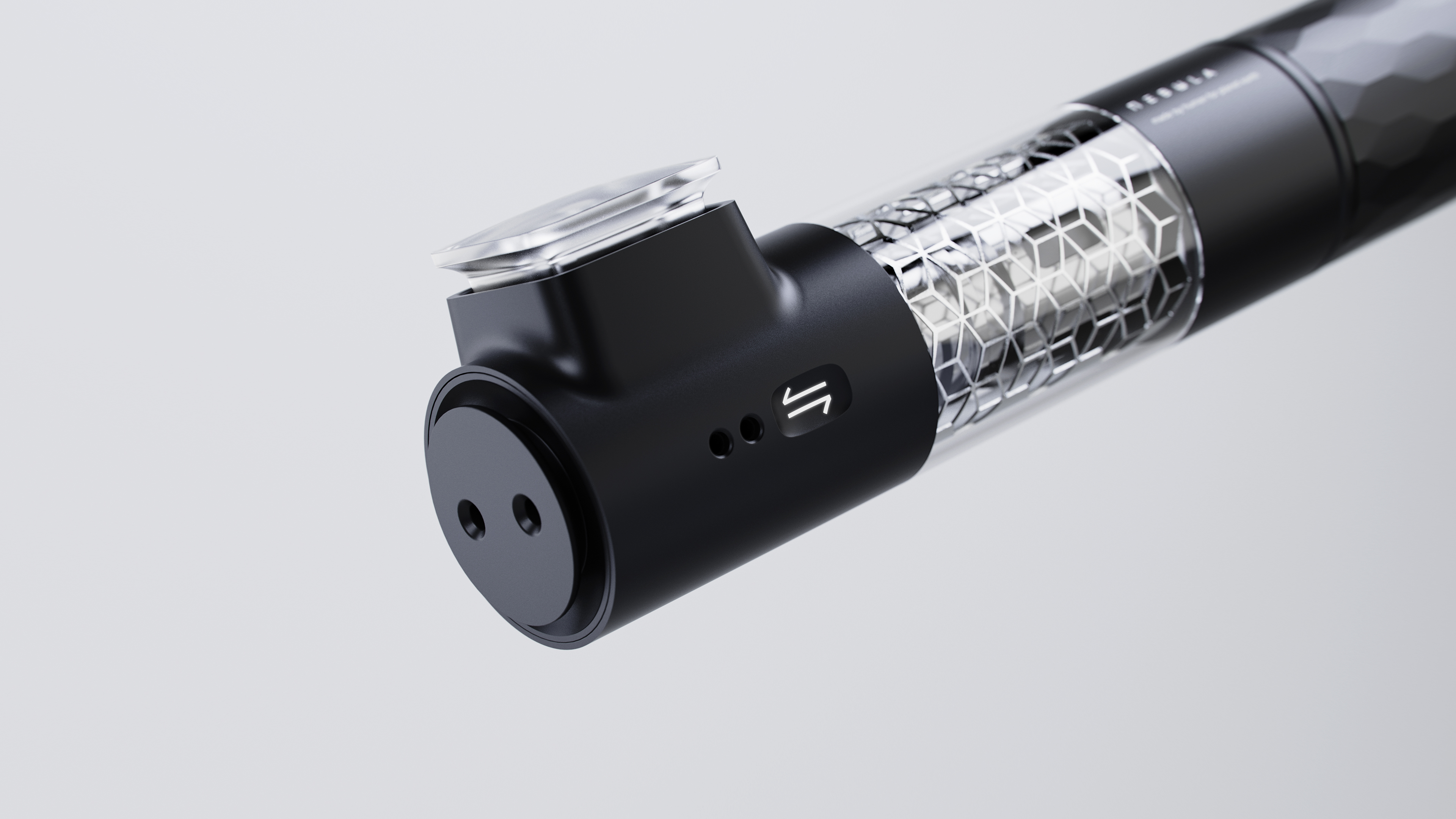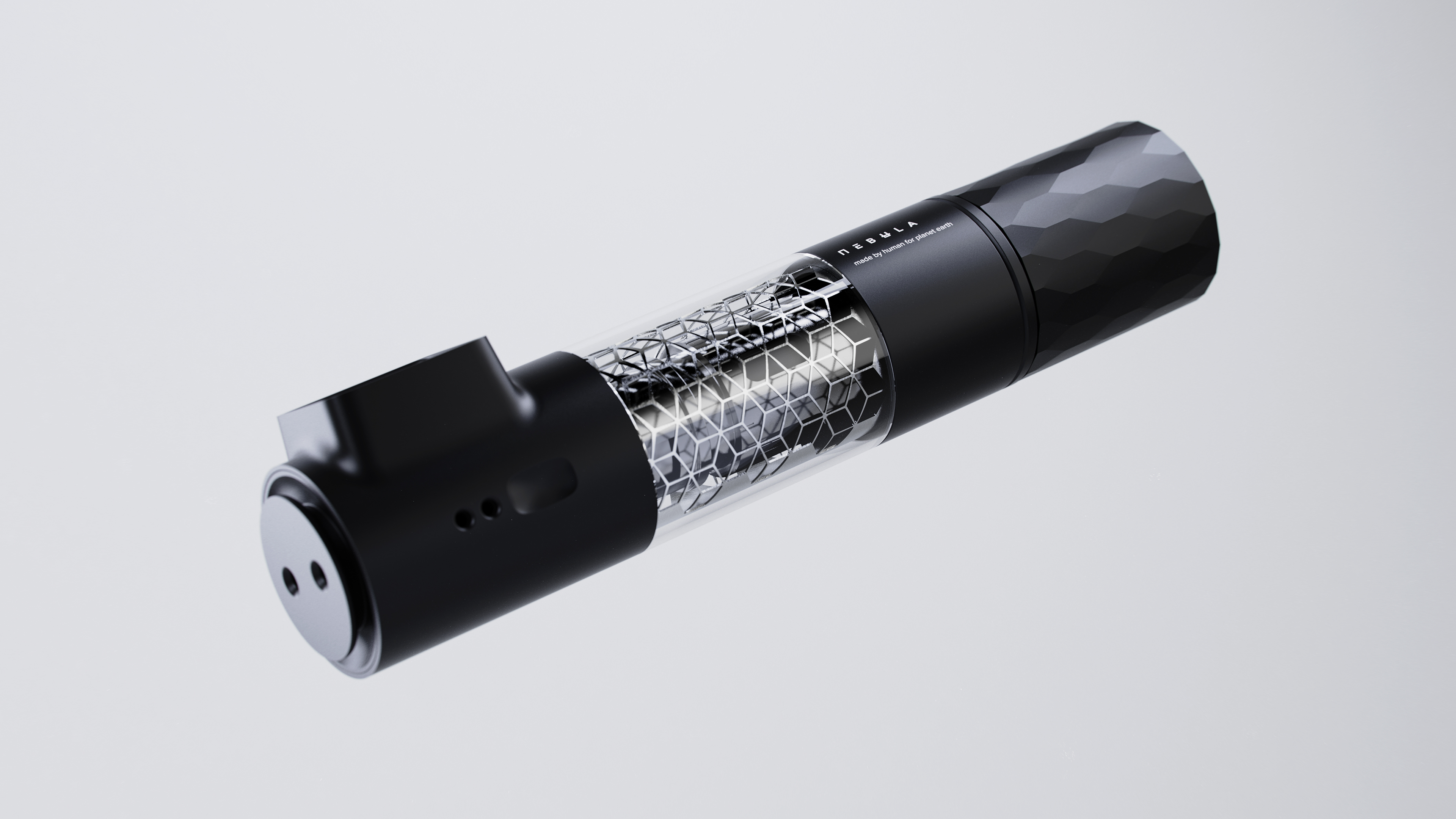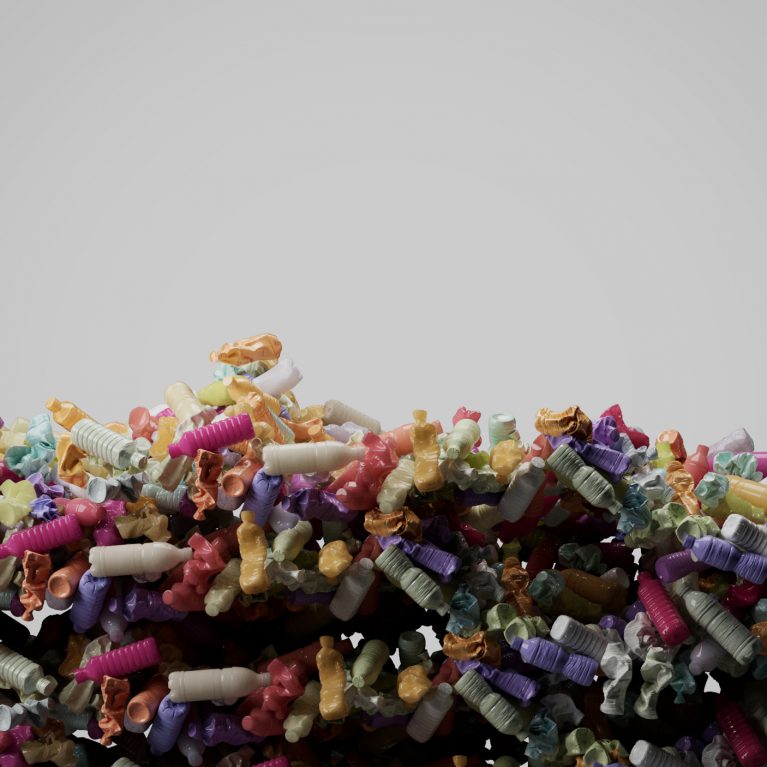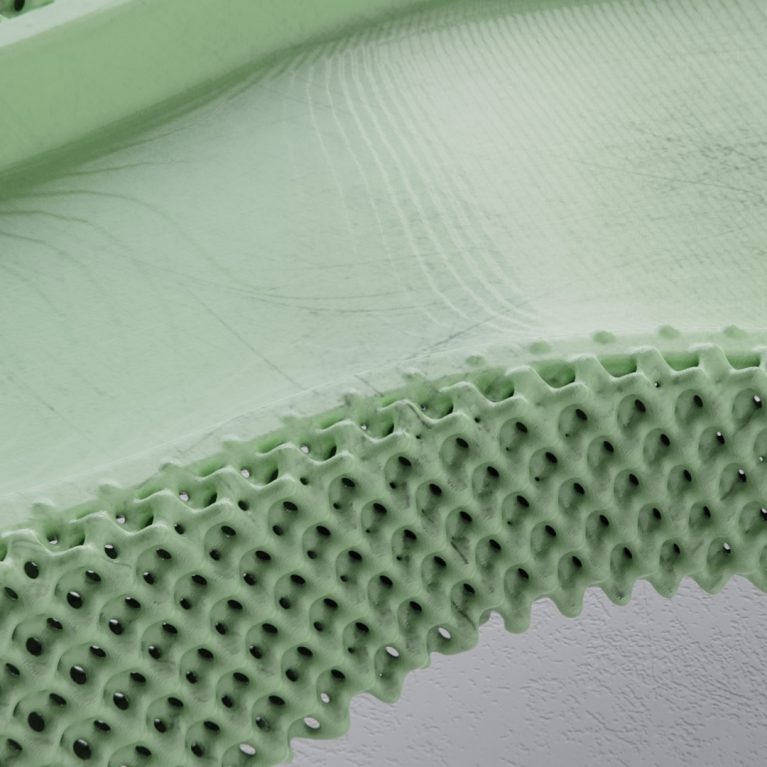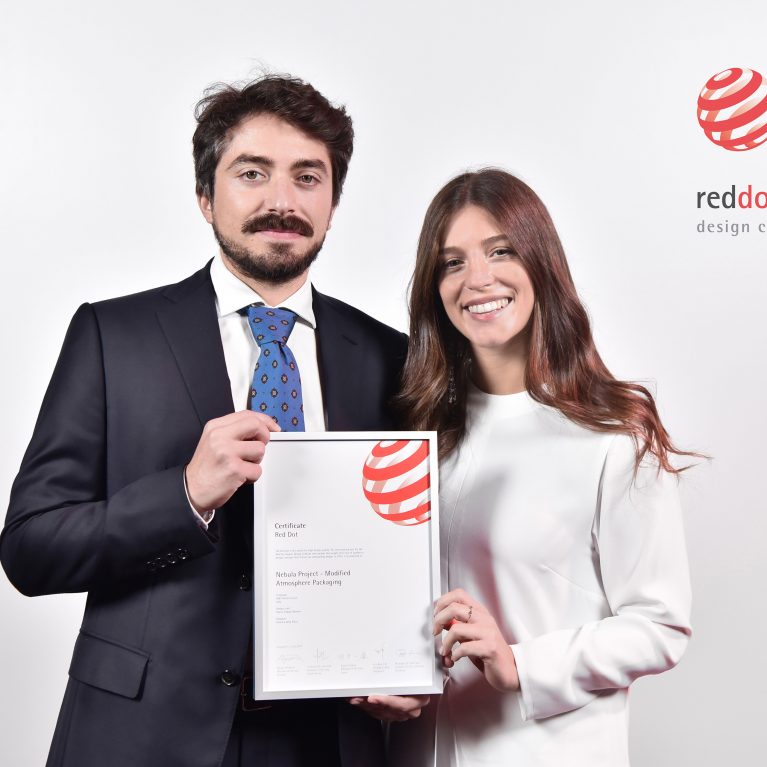Nebula is a compact MAP technology device developed for secondary shelf life and home usage.
It’s able to change the composition of the atmosphere inside a container with a special gas mixture, creating a protective atmosphere based on different percentage of nitrogen and carbon dioxide.
The intention of the design was to encapsulate as much technology as possible in an original but extremely simple product
The project aims to be the first consumer product developed in SAES’s own laboratories. The intention of the design was to encapsulate as much technology as possible in an original but extremely simple product. The designers began to study the equipment in the SAES vacuum laboratories, where larger devices for particle accelerators are made, and were struck by the cleanliness of the volumes and lines of these extremely technical objects, designed without any aesthetic intention.
With Nebula we tried to replicate that approach, pushing the technology to its limits to minimase the size of product and increse performace. This allowed us to translate the scientifc traits of the company in an design laungage. The philosophy has always been to go against the tide: reduce the electronics and displays to the essential, reduce the functions to a minimum and take maniacal care of the invisible structure.
Modified atmosphere; the science behind gas combinations for the unaltered preservation of nutritional properties and characteristics of food products
Protective atmosphere packaging, also known as modified atmosphere packaging or MAP is a well-established technology commonly used by the food industry to preserve the quality of fresh products over a longer period of time without the use of preservatives that could alter the nature or taste of the product. The concept is simple: the natural ambient air, composed by nitrogen, oxygen, argon, water vapor, carbon dioxide and traces of other gases and vapors, is replaced inside the package by a gas mixture, often simply nitrogen and carbon dioxide.
Each meal has a specific optimum gas mixture, while nitrogen and carbon dioxide are the most typical combination for a protective environment. The presence of oxygen is also necessary for other foods. For instance, raw red meat usually uses a high oxygen content to maintain its red hue. In some circumstances, oxygen is required to stop anaerobic microbes from growing. Fresh fruits and vegetables, especially those that have just been cut, are a little bit different because while oxygen promotes ripening and oxidation, completely eliminating it might result in anaerobic fermentation. Therefore, the best course of action is to use the minimal oxygen concentration to significantly reduce the rate of respiration, without causing the formation of anaerobic organisms, sort of like an artificial lethargy.
70/30
nitrogen/carbon dioxide ratio is beneficial for raw poultry
40/60
ratio is favored for raw fish
70/30
cooked meat, soft cheese, and prepared foods need a 70/30 nitrogen/carbon dioxide ratio
Six different atmospheres in one single product. The power of technology in the palm of your hand.
Nebula utilizes a two-step system based on the two different holes present on the containers lid: it initially extracts air from the internal atmosphere and then subsequently injects a pre-mixed gas composition, which is different and ideal for the food contained inside. This allows the extension of the preservation of all the organoleptic properties of the contents.
The changing internal atmosphere requires a specific structure of the containers. The specifications for a MAP container are very different from the ones needed for a high vacuum container. In the case of MAP, a vacuum equal to 100 mbar is reached in around 30 seconds, and by injecting gas, the pressure is then brought back to slightly under 1000 mbar. Due to the process’s rapidity, structural liberties like the pursuit of lightness and the use of recycled chemical monomers are permitted. The limitations are related to the color, which must be black, but the spectrum of benefits includes anything from energy usage to recycling. Additionally, the weight savings of the tensile and impact microcellular PP might be up to 20% and 30%, respectively, in compared to the conventional PP.
Nebula provides a unique combination of technologies for the preservation of food in a controlled atmosphere, tailoring gas compositions.

Mixes gases
By using refillable compressed gas capsules Nebula allows the creation of different mixes of nitrogen, carbon dioxide and oxygen.

Blocks oxidation
Calibrating oxigen quantity Nebula stop ripening and oxidation process.

Killing bacteria
By using carbon dioxide Nebula kills bacteria and by calibrating oxygen prevents the emergence of herobic and anaerobic bacteria.
Journal
B!POD’s Action Against Ocean Plastic Pollution
In 2023, B!POD took a significant step towards sustainability. It ceased the production of containers using traditional polypropylene (PP) and switched entirely to using OBP.
Procedural Design for Industrial Applications
Topological optimization is revolutionizing design approaches in various fields, from complex system engineering to architecture.
SAES Getters wins the ‘Red Dot Award’ with Project Nebula
“With Nebula, we wanted to push the technological part to the limit to reduce the size of the product.”


